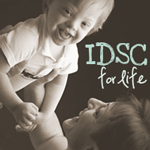You can view the first two posts covering Dr. Turkel's book here and here.
In this third post, I am going to quote a lot out of Dr. Turkel's book to show how his practice operated.
On page 12-13 of his book he writes,
Before a patient's first examination, records are sent to my office. These records include the birth and medical histories, chromosome reports and a karyogram, hospital and medical records, school and I.Q. reports, T3, T4 TSH (thyroid) studies, and 5 X 7 photographs. In this way, I obtain background information on the child's condition before the examination and can prepare the medication. Following a thorough examination of all organ systems, and including photographs of the characteristics of the syndrome such as the elevated palate, palm prints, and assessment of the patients social or mental age, specific ways to help that particular child reach his potential are discussed. Next, X-rays are taken at an independent clinic. Any necessary dosage adjustments or supplements are prepared at this time.
A patient's first appointment includes an overview of Down syndrome. The chromosomal basis of the disorder is reviewed, together with implications of the excessive gene products and how their presence interferes with their child's development. Parents observe how the accumulations manifest themselves in their own child: puffiness around the eyes, chin line, neck, abdomen; the enlarged tongue, wide gum line; skeletal abnormalities seen on X-rays. I also demonstrate improvements seen in other patients. If treatment is ended too soon, new accumulations block further development.This describes how Dr. Turkel's practice functioned. In this diagram, Dr. Turkel explains what he believed the "Treatment with the 'U' Series" did. There is a diagram on page 19 of the book that shows what Dr. Turkel believed the U Series did. I didn't get it scanned in time for this post.
On Page 28, Dr. Turkel writes about the improvements he typically saw with the "U Series":
The features of Down syndrome that usually improve are those associated with metabolic accumulations, especially fluid retention.
Improvements that occur most of the time:
GENERAL HEALTH
Enlarged Heart
Pulmonary congestion and increased lung capacity
SKELETAL DEVELOPMENT
Hip sockets
Bone age - general growth
Reduced hypermotility of joints
FLUID REMOVAL
Reduction of enlarged tongue and fissures
Widening of palateImprovement of facial expression and apperance
Reduced abdominal protrusion
OTHER
Development of nasal bridge with reduction of epicanthal folds.
Reduction of fine-lens opacities and improvement of vision
EDUCABILITY
Increased attention span
Improvements that occur some of the time
SIGNIFICANT IMPROVEMENT IN I.Q.
SKELETAL
Reduction of scoliosis (with foot support)
Improvements that occur rarely
SKELETAL
Single-palm line divides
Incurved fifth fingers straightenWhile some may laugh at some of the improvements Dr. Turkel reports, this is what he believed he saw at the time. His U Series helped many families back in the days when there was little to no hope given for people with Down Syndrome.
Even people in other countries raved about what the U-Series did for them. And, in some reports, you can see that the U Series, was something extremely unconventional at the time. And when it did help patients, people were amazed.
On pages 130-131 Dr. Turkel writes about the Japanese use of the U-Series,
In 1964, I renewed my acquaintance with Dr. Iida at a convention of Military Surgeons in Washington, D.C. Dr. Iida told me that complications of Down syndrome were claiming the lives of 90% of these patients prior to adolescence, and that he wanted to learn how to compound the "U" series correctly.
We discussed the formulation and manufacture of the "U" Series. For the following ten years, although I did not know it, the Japanese used and studied the "U" Series, in somewhat modified form (MD Series) because of the unavailability of several of the components.
In 1974, I received the following letter:
"I am very pleased to tell you that thanks to your kind approval we have been able to prescribe the medicine to Japanese children in several thousand at national or university hospitals amounting to about 60 in total throughout Japan, thus resulting in improvement of their health greatly."
On September 12, 1974, Dr. Iida and Dr. Takatsune Koishi, a biochemist and president of Kobato-Kai, the Parents' Association, visited Detroit to thank and inform me of the results.
The mortality rate prior to adolescence had been reduced from 90% to 1%. Since then at least 1000 additional children have been treated at 80 hospitals. While here, Drs. Iida and Koishi examined my results. Observing that the physical improvements were greater with the "U" Series than the MD Series, they decided to import it, preferably from the United States, as soon as possible.The Japanese had great results, as is stated above with an altered version of the U-Series as well. They ended up trying to import the U-Series into Japan, but the FDA refused. I will go into the details about the FDA and the U-Series in the next post, Lord willing.

Tweet























0 comments:
Post a Comment